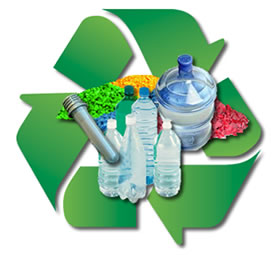Understanding Plastic Recycling

Polymer Recycle
Plastic recycling is the process of recovering scrap or waste plastic and reprocessing the material into useful products.
Since plastic is non-biodegradable, recycling is a part of global efforts to reduce plastic in the waste stream, especially the approximately eight million metric tonnes of waste plastic that enter the Earth’s ocean every year. This helps to reduce the high rates of plastic pollution.
Plastic recycling includes taking any type of plastic, sorting it into different polymers and then chipping it and then melting it down into pellets. After this stage, it can then be used to make items of any sort such as plastic chairs and tables.
Soft Plastics are also recycled such as polyethylene film and bags. This closed-loop operation has taken place since the 1970s and has made the production of some plastic products amongst the most efficient operations today.
Compared with lucrative recycling of metal, and similar to the low value of glass, plastic polymers recycling is often more challenging because of low density and low value. There are also numerous technical hurdles to overcome when recycling plastic.
Over the past few decades, the use of plastic in manufacturing has increased exponentially. From disposable packaging, like bottles and bags, to durable goods, like watches and appliances, many products that were formerly made of “natural” materials are now made of plastic.
Not all plastic, however, is the same. Each type, or resin, has a unique chemical formula which gives it special properties. In 1988 the plastics industry established identification codes to make separation of different polymers easier and more consistent for recycling.
Recyclable Plastics
Plastic bags can be recycled through most grocery stores or supermarkets.
Durable plastics
Durable plastics, such as those used in the manufacture of telephones, coffee makers, water heater covers, and the like.
There are three primary reasons why some plastics are difficult to recycle:

Plastic Recycling
1. They are not uniform size
The Materials Recovery Facility (or MRF, pronounced like “smurf”) is built to handle recyclables of standard shapes and sizes, like aluminum cans, glass bottles and jars, and rigid plastic food packages. It can process materials that are a minimum of 2″ in any 2 dimensions (i.e. 2″ tall AND 2″ wide), and a maximum of 2 feet.
2. The type of plastic is unknown
Even if durable plastic was broken into manageable piece sizes, cannot be processed alongside the rigid plastic containers that are normally recycled. They are made of different types of plastic, and different types of plastic are not recycled in the same process.
3. Alloy/Engineered Plastics
Another barrier to recycling is the widespread use of dyes, fillers, and other additives in plastics. The polymer is generally too viscous to economically remove fillers, and would be damaged by many of the processes that could cheaply remove the added dyes.
Plastic resin codes and what they mean:







